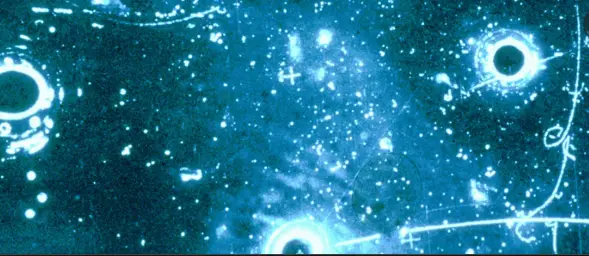All of the neutrinos in our universe are either active (they are the ones that interact with other particles) or sterile (they have no interactions). That may sound like not having interactions would make them pretty boring, but it turns out that without sterile neutrinos, our universe wouldn’t be able to exist! Sterile neutrinos are an elusive bunch, and they are very hard to detect. We know they exist because we can observe the effects they have on other particles.
What Are Sterile Neutrinos?
Sterile neutrinos are one of a number of hypothetical particles that play a role in cosmic physics. For starters, we know from Earth-based and space-based observatories that there is far more matter than anti-matter; to explain why, particle physicists theorize that sterile neutrinos (sometimes called dark or cold neutrinos) exist alongside regular neutrinos. These neutral particles interact very weakly with regular matter and are therefore incredibly difficult to detect. Despite their elusive nature, scientists have calculated that sterile neutrinos comprise approximately 27% of all stuff in our universe—and it’s likely they were involved with some pretty important events over billions of years. Here’s what we know about these interesting little guys.
Scientists now believe that three types of neutrinos exist: electron neutrinos, muon neutrinos, and tau neutrinos. All three are subatomic elementary particles which don’t carry electric charge. They were first postulated by Wolfgang Pauli in 1930 to explain how beta decay could conserve energy, momentum, and angular momentum (or spin). The existence of these three different flavors was confirmed in 1956 by Clyde Cowan and Frederick Reines (who won a Nobel Prize for their work), when they detected electron neutrinos produced by nuclear reactors.
What Do Scientists Believe About Them?
At first, neutrinos were believed to have no mass, but scientists now know that they have tiny, non-zero masses. As a result, there are four types of neutrino: electron neutrino, muon neutrino, tau neutrino and their corresponding antineutrinos. But these particles only make up a small portion (about 0.3 percent) of all matter—the rest is made up by protons and electrons. So why are sterile neutrinos so important? Well, as it turns out, sterile neutrinos may be responsible for some of our universe’s most mysterious phenomena. For example, one theory suggests that sterile neutrinos could be dark matter—an invisible substance that makes up about 27 percent of our universe. Dark matter is thought to interact with other forms of matter gravitationally, without otherwise interacting via electromagnetic forces or nuclear forces. This means that if you shine a light on dark matter, it won’t reflect any light back at you; hence its name. And since we can’t see dark matter directly, we can only observe its gravitational effects on other objects. In fact, scientists believe that dark matter holds together galaxies and keeps them from flying apart! Sterile neutrinos might also explain why there’s more matter than antimatter in our universe. In physics, matter and antimatter are two different forms of stuff. Matter has an electric charge (+1), while antimatter has an opposite electric charge (-1). When they meet, both disappear in a burst of energy.
What Does This Mean For Us?
This means that not only do we have to look for matter neutrinos (and anti-matter neutrinos) but we need to also look for sterile ones. Now, how could a neutrino be ‘sterile’? Well, it sounds kind of gross but sterile neutrinos are particles that can exist but they aren’t actually interacting with other matter or anti-matter. In order to find these sterile neutrinos you would need to build an underground lab that is shielded from all outside sources of radiation and then wait for one of these neutrinos to hit something inside your lab. Now, I know what you might be thinking; why go through all of that trouble when there are so many other things in our universe that we should be looking at instead? The answer is because if we don’t look for them then we may never see them! The reason that these sterile neutrinos are so important is because they may help us answer some of science’s biggest questions such as: Why does our universe seem to be expanding faster than it should? Why does everything seem to weigh less than it should? What happens after you die? If scientists found out more about sterile neutrinos then maybe those questions could finally be answered! After all, just think of how much easier life would be if we knew what happened when we died… We wouldn’t feel so lost. Anyway, back to business…So now that you know about these mysterious little guys let’s talk about where they came from and why there might even be more than one type!
![]()
